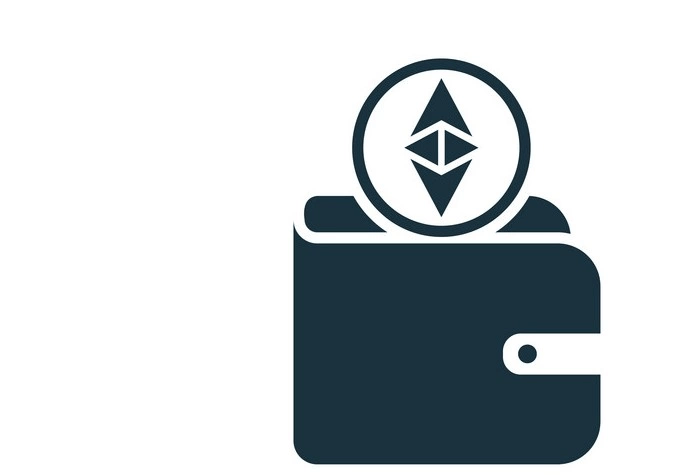Ethereum Classic cryptocurrency appeared as a result of a hard fork (complete separation) of the Ethereum blockchain. The separation was undertaken to protect the currency from hacker attacks. Hackers stole a third of the coins from owners, and the platform’s developers modified the blockchain to recover the lost digital assets. In an attempt to prevent future attacks, Ethereum creators created a more advanced blockchain used to mine Ethereum. ETC coins remained in the old system, have a lower value, but are trusted by experienced miners.
Ethereum developers promise that a full transition to Ethereum 2.0 will take place very soon. This means a complete rejection of the Proof-of-Work consensus algorithm and mining. This is not exactly pleasant news for owners of mining farms aimed at mining ETH.
The good news is that the Ethereum Classic blockchain is almost a complete copy of the Ethereum blockchain. This means that the mining mechanisms in the Ethereum Classic network are identical. The migration of ETH miners has not yet gained momentum, but once ETH mining becomes impossible, the transition to Ethereum Classic will be painless and quick.
Ethereum Classic, just like Ethereum, is also mined using the Ethash algorithm; the user registers a cryptocurrency wallet, chooses a pool for profitable mining, and installs a client program. Hashing blocks on the Ethash algorithm take place with a large load of the video card, so miners use powerful GPUs with a memory capacity of four gigabytes or more.
Ethereum Classic features
ETC cryptocurrency is a decentralized asset. Ethereum Classic maintains the autonomy of the system during mining and protects transaction chains from external influences. The technological basis of the digital coin is the , which executes various programs (e.g., smart contracts) on public nodes of the network. The coin has a number of features:
- Blockchain is protected from changes. Chains of blocks are closed from changes by users or creators.
- Modernization of the platform in agreement with the participants of the network. Blockchain improvements are made after discussion with users: developers consider the wishes of the community.
- Protection of sensitive information. The ETC team’s priority is transaction security.
- Increasing blockchain signing speed. Finding and closing a new transaction chain takes up to 14 seconds.
Pros and cons of ETC mining

ETC cryptocurrencies are mined using the Proof of Work (PoW) mining algorithm; after the hard fork, the coin limit was set at 210.7 million coins. ETC mining has a number of advantages:
- Network decentralization guarantee. The PoW algorithm is adapted for mining on video cards, so solo miners have been protected from the supremacy of owners of expensive ASICs “flooding” the Bitcoin market. Competition is fair and mining of the currency remains profitable.
- Integration with other projects. ETC’s open-source code and the availability of the Software Development Kit (a set of development tools for programmers) increase the coin’s popularity.
- Limited issue. The maximum issue volume is 210.7 million coins, so the asset tends to gradually increase in value, and the profit of miners grows.
Among the key disadvantages of ETC for miners is the vulnerability of the algorithm to a “51% attack” – users who own most of the capacity can affect the entire blockchain. ETC source code has already been successfully attacked by hackers, the network is still unstable and users complain about delays in synchronizing transactions.
Ethereum Classic refers to community-driven projects; the development and support of the platform are carried out by a proactive group of developers. The popularity of coins and decentralization of the system increase confidence in the coin. So, the final capitalization in the middle of July 2022 is $3.1 billion.
Setup

The PoW algorithm behind ETC digital coins allows mining ETH or ETC on powerful video cards. Due to the compatibility of the source codes of ETC and ETH coins, dual-mining of the two assets simultaneously is possible after setup.
A popular dual-mining client is Claymore’s Dual Ethereum Miner. The system is configured through the text file StartETC.bat, available on the websites of the coin developer or pool owner.
A detailed list of keys for setting with decryption is available in the description of the file. There are three mandatory parameters:
- The address of the pool, after the -epool key. The user specifies the URL of the site that distributes the volume of tasks among the mining participants.
- The address of the cryptocurrency wallet for storing ETCs, after the -ewal key. Miner copies the combination of letters and numbers from the coin storing program.
- The username of the miner in the pool, after the -eworker key. The username is created to track mining statistics in the pool.
Traditionally for cryptocurrencies based on the Ethash algorithm, the optimal equipment for mining remains powerful video cards with memory modules from three gigabytes. Users choose AMD or NVIDIA models.
Due to the increasing complexity of the blockchain network, miners choose to mine in a pool that combines the power of several farms. The server distributes the volume of blocks according to the user’s hash rate, and rewards are paid proportionately. Farm owners mine ETCs on NVIDIA graphics cards that can be downloaded and overclocked. Coin mining is set up in four steps:
- ETC wallet registration. It is recommended to download and check the wallet before you start.
- Choosing a mining pool. The list of powerful services that accelerate earnings is presented on thematic forums and is regularly updated on the project website.
- Assembling a personal farm. Profitable ETC mining is possible on installations of four or six GPUs from NVIDIA or AMD. Reasonably priced and efficient option – AMD RX 470 and above.
- Downloading and setting up the client for mining. Most users prefer to work on Claymore’s Dual Ethereum Miner.
Where to store

The coins gained can be converted into other currencies, traded on exchanges, exchanged for fiat, or kept as a long-term investment.
The owner of the farm should take care of the safe storage of the received ETCs. Free and fast option – online wallets (for example, ), and the most reliable – hardware wallets (for example, Ledger Nano).
You can also use a multi-currency account on a cryptocurrency exchange or exchanger. ETC storage method for active traders features low asset protection and fast access to funds. Among many popular crypto exchanges are Binance, KuKoin, and FTX.
It is recommended to keep the main amount of coins on the hardware wallet, and transfer funds for conversion to the online wallet account.
Choosing a pool
The level of complexity of the ETC blockchain is constantly increasing, so solo mining on a personal farm is unprofitable. Users join together in pools – communities that allow them to jointly hash blocks. The reward for a signed block is distributed among miners in proportion to the invested funds. The Ethereum Classic blockchain offers 3.2 ETCs for a successfully recognized block. A pool for ETC mining is chosen based on the following criteria:
- Amount of commission. As a rule, mining pools charge no more than 5% of the amount of mined coins, the fee is charged at each withdrawal.
- Income distribution method. Most pools use PPLNS (Pay Per Last N Shares) – the method of charging a fee based on the last correctly recognized blocks.
- Withdrawal options. ETC earned in the pool can be transferred to a cryptocurrency wallet, internal user account, or exchange account.
Among the popular pools for mining Ethereum Classic are etc.2miners, aikapool, etc.ethertrench. Before registration, it is necessary to familiarize yourself with the interface of the service and reviews of experienced users.
Program
НThe most convenient way to mine ETCs is Claymore’s Dual Ethereum Miner. Miners note a number of advantages of Claymore’s Dual Ethereum Miner:
- Dual-mining without loss of capacity. Claymore’s Dual Ethereum Miner allows you to simultaneously hash blocks of multiple cryptocurrencies while maintaining transaction processing speed.
- Solo mining and working in pools. Claymore’s Dual Ethereum Miner client supports solo mining and pool collaboration; users can adapt to network changes.
- Fine-tuning of mining for Ethereum Classic blockchain requirements. OpenCL software code increases performance (hash rate) of video card and motherboard by 5% on average and supports Windows and Linux operating systems.
Different versions of Claymore’s Dual Ethereum Miner are compatible with AMD or NVIDIA video cards, it is recommended to study the description before installing the program.
Profitability
The current value (middle of July 2022) of the ETC coin is $23. At the moment, mining Ethereum Classic is less profitable than working with ETH due to the modest value of the coin. On the other hand, the level of complexity and the DAG file size of ETC is much smaller, so novice miners can profitably get a few coins. Also, we should not forget that the transition of ETH to ETH 2.0 will provoke a migration of miners to ETC, which can lead to a significant increase in the price of ETC.
The final profitability of ETC mining depends on the dynamics of the coin’s rate, the amount of service fees from pools and exchangers (information is available in the FAQ services), and the cost of building and maintaining your own farm of several video cards.
